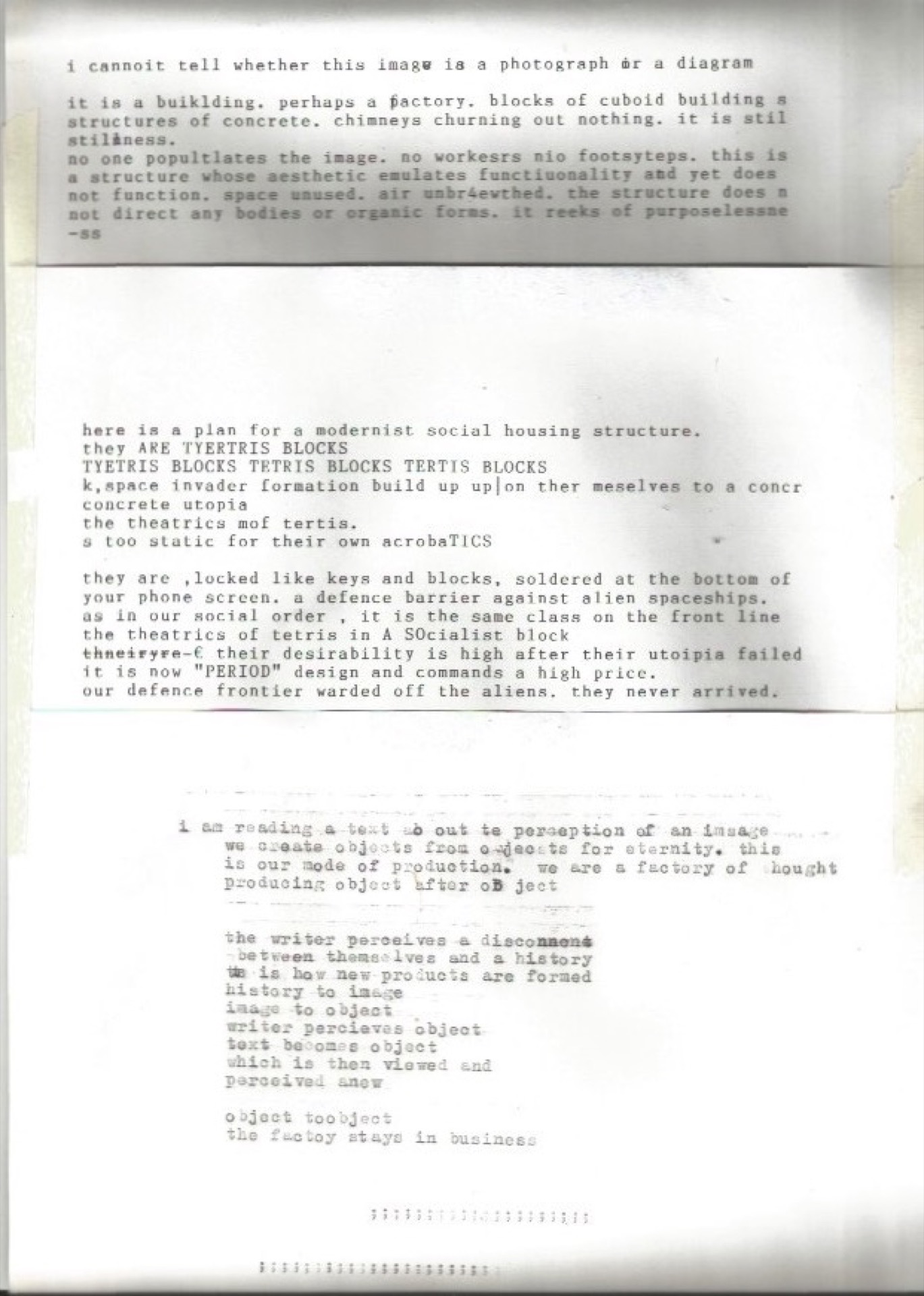Some of the discussion in this essay is concerning fictional characters, artworks and political movements. It is in response to an essay by fictional character Addison Cole (The Dark Object, by Katrina Palmer) about the real artist Absalon, and draws comparisons with a fictional organisation called BAM which I conceived of in 2016.
In Response to 'An Essay About Absalon' by Addison Cole: The De-Structuring of the Body in Absalon's Cells and in The Body Abolition Movement
This essay will draw comparison between the work of Israeli sculptor Absalon (1964-1993), in particular his 1992 Cellules, (as represented in the essay by Addison Cole entitled ‘Whiteness and Objecthood in Absalon’s Cells’) and the contemporary Body Abolition Movement (BAM) which formed in 2016.
The cells were entirely self-contained living pods ranging between 4 and 9m2 designed precisely around his own bodily measurements. Their purpose was not only to fit perfectly to his needs but also to direct his body for the greatest possible efficiency, in line with the philosophy of Modernist architecture. However, this is only scratching the surface. Absalon’s cells were both protest and escape from what he saw as a world increasingly without privacy. The Cells demonstrate both a Utopian design and also one which is hostile to the presence of others. In this sense his philosophies, although heavily influenced by modernism, were also at odds with that of the revolutionary; Absalon’s extreme centralising of the ego is a negation of the Other and contradicts many of his Utopian ideals.
Absalon’s Cells in fact reveal an obsession with body, in particular his own. Addison makes the mistake of equating the “whiteness, purity, geometry and formal efficiency” to “complete denial of the human subject” as a “negation to the point of spirituality”. She bases this on the lack of traces of a human body: “No traces are visible because there was no expulsion, the body was never there to begin with”. Firstly, the idea that the Cells “cannot be entered” is untrue as there is photographic evidence of Absalon and of gallery viewers within the spaces. Addison neglects that the Cells are designs which contain traces of the body within their very geometry and engaged in the deepest sense of their function. In this sense these living pods or environments act as an extension of Absalon’s body, blurring the boundary between the body-object and space.
Although Addison’s theory of Absalon’s erasure of the body may truthfully pertain to his erasure of any other body, the extent to which Absalon constructs his own world, isolating himself within it, places himself as the only human subject. The body is certainly present within his Cells, but only his body. Addison speaks of the generalised body, however, and in this sense Addison is correct when she writes “No traces were visible because there was no expulsion, the body was never there to begin with”; we, those who are not Absalon, do not exist within his world, our bodies have not been expelled because they were never there to begin with.
Whereas Absalon relies on the order and efficiency of modernist aesthetics, BAM embody an erratic and anarchistic chaos. The group seems to follow a practice of de-structuring their own bodies. As with Absalon, they show a desire for negation of the other, which is demonstrated in their resistance to the presence (perceived or otherwise) of a viewer. Although the conglomerate operate in a variety of ways, this essay will focus on their digital practices which are also concerned with the relationships between the body-object and space. Works are labelled in a way that corresponds with the number assigned to a body or space e.g. the work entitled Body4.Space5. This system of labelling demonstrates an attempt to dehumanise, as a feature of the group's Cartesian aim to separate the body from the self, claiming that this is necessary in order to restructure the societal relationship to body in the form of the so called 'Futurist Body'. The movement enters difficult territory of self-contradiction here. Much like Absalon, their isolationist strategy belies their revolutionary status. In their erasure of the outsider, the concept of society is limited to themselves.
Despite these similarities, the reality of the work produced by BAM bares no aesthetic resemblance to that of Absalon. Through a process of digitising, de-structuring, and reconstituting bodies and spaces, BAM creates a dialogue between them as dematerialised objects. Rather than a process of negation and erasure of the body (although the body in reality is dematerialised, the process of digitisation maintains the body in an altered material state), BAM highlights a grotesque and comic instability in complete contrast with the purity and efficiency of Absalon's Cells.




(2016)